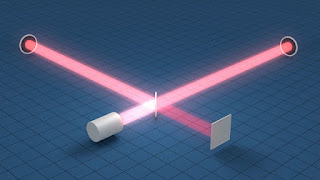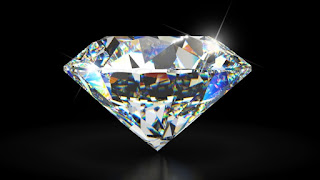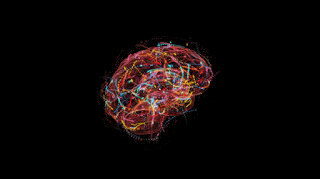In the ancient scriptures of both vampire and witch religions, a fallen angel named Azazel fell in love with a human named Lilith. Azazel opened Lilith’s mind to its full potential, giving her magical abilities which made her the first witch. Living together in bliss for centuries, Lilith gave birth to Azazel’s child, Dracule. To her horror, Dracule was cursed with an insatiable craving for human blood, becoming the first vampire. Feeling that this was a result of their forbidden mating, Lilith abandoned Azazel and Dracule to go out and explore the world. As Dracule reached adulthood, the angels observed that he had begun to transform more humans into vampires. For bringing this curse into the world, Azazel was banished from the mortal plain. In his absence, he left a book of scriptures called “The Book of Azazel” to govern over Dracule and his growing race of vampires. Still bitter from abandonment, Dracule discovered that Lilith had gone out into the world and shared her magical gifts with other humans, creating more witches as her new family. Enraged at her rejection of him and accepting of others, Dracule pronounced the existence of witches an abomination and declared war on all of their kind. To create protectors for her people, Lilith used her power to mix the blood of a vampire with the blood of a wolf to be ingested by humans. This created the first werewolves. In an effort to draw the wrath of Dracule away from the witches, Lilith disappeared from her coven but left them with a set of scriptures called “The Book of Lilith”, to help guide them in her absence. The sudden disappearance of Lilith caused Dracule to abandon his army and follow her into the unknown, never to be seen again.
The loss of their leader only increased the vampire’s war with the witches and their werewolf, slave soldiers. After centuries of war, scriptures from both religions brought the vampires and witches to the prophesized holy land of Salem in the new world. In the newly settled town, a war is waged between vampire, witch, werewolf and human over ownership of the land. As the son of the witches’ coven queen, Amelia, falls in battle, she sends for a young scientist named Dr. Victor Frankenstein. He had become world renown for tales of his resurrection procedures. Shortly after his arrival in Salem, Dr. Frankenstein constructed a new resurrection machine that combined his technology with the witches’ magic. After activating the machine, it not only revived Amelia’s son, but also opened an interdimensional portal that released powerful chaotic energy that threatened to destroy the entire town. Just then, a mysterious warlock suddenly arrived on the scene and used his great power to contain the rampaging energy back into the machine. The warlock then gathered the races of Salem and introduced himself as “Artorus”. He then presented the vampires with the more enlightened new testament of the Book of Azazel, as was prophesized in their old testament scripture. Artorus told the people that he had been sent by the newly enlightened Azazel from beyond to bring peace to Salem. He informed them all that the energy released from Dr. Frankenstein’s machine was the eternal light of the holy land prophesized by both vampire and witch scriptures. Artorus continued to further explain that now with the stabilized life energy emitting from the machine throughout Salem, that no supernatural beings would ever crave to feed again as long as they resided on Salem lands. Then turning his attention to the humans, Artorus told them that by coming directly into the machines’ presence, they would become immortals like the supernaturals.
Having gained respect from the different factions with his great power and knowledge, Artorus struck a peace treaty amongst the races. He both convinced the witches to free their werewolf slaves, as well as have the humans accept the supernaturals since they no longer needed to feed. Incorporating rules from the various religions, the races formed laws for a Salem secret government and established individual territories within the town. To enforce the laws of the new government, Artorus chose seven anointed soldiers he dubbed, “The Reckoning”, that consisted of every race of Salem. He equipped them with seven amulets connected to his own power that would increase the Reckoning’s individual abilities tenfold. After decades of peace in Salem, as the secret society stayed hidden from outsiders, Artorus and The Reckoning disappeared from the town. Artorus left only a prophecy of their return in the time Salem’s greatest need.
Centuries later, Salem has continued to thrive. Now grown from small town into the metropolis of “New Salem”, the politics and beliefs within the city have greatly evolved. Dr. Frankenstein, now going by, Dr. Vincent Ericstein, has brought a scientific revolution to the city with his many secret technological breakthroughs. With advances such as his psychic “Telenet”, which connects the minds of all of New Salem’s citizens, as well as the high tech weaponry used by the New Salem Secret Police, order has been kept in the ever evolving secret society. Even more transformative, has been Dr. Ericstein’s “Evolutional Supernatural Theory”. In his theory, he explains that witches are just telepathic humans with various psychic abilities. He also explains vampires and werewolves as the result of highly evolved predatory viruses, that have formed symbiotic bonds with human hosts. Following his scientific movement, the younger generations of the different New Salem factions have begun to reject the rules of the old religions and started to integrate their cultures.
With the age of enlightenment continuing to grow, the citizens of New Salem’s secret society have grown weary of the restrictions living in hiding has placed on them and seek the government’s approval to expose their existence to the rest of the world. But not everyone has looked favorably upon this revolution. A growing terrorist organization known as, “The Red Circle”, have sought to preserve the ways of the old supernatural religions by committing random massacres on the civilian populace and threaten to cause a war with the outside human world if New Salem’s government approves exposure. Though the government has tried to stop them, they’ve found their forces to be no match for the mysterious power of the Red Circle. Now trying to disrupt the paralyzing religious influence of the Red Circle as well as the manipulations of his grandfather on the city government, young scientist Christian Ericstein has sought out to contact the long missing Artorus. Christian plans to bring Artorus back to the city to assemble a new Reckoning to destroy the Red Circle and maintain the balance between old religious beliefs and the modern laws of the government. As a scientist, Christian strictly believes in pure logic, but after being witness to some of Artorus unexplainable abilities upon his return, he has begun to question whether there’s more of a connection between science and religion.









